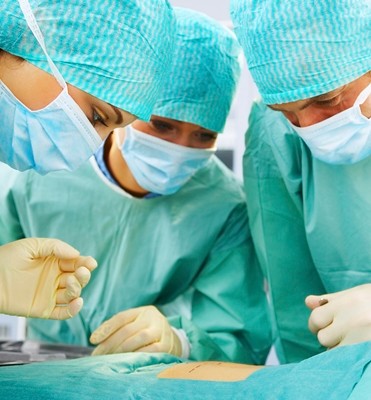
By Russ Ward (@russcward)
Theyve been happening for over a hundred years, and millions of people around the world need them. What are they? Today we’re talking about organ transplants, one of the triumphs of medical technology over disease and injury.
It takes incredibly complex networks of communications and transportation involving databases, private jets, and volunteers to make organ and tissue transplants possible. Already newsworthy simply for their miraculous-seeming ability to renew life, transplants have been getting additional publicity in recent years as hospitals live-tweet the procedures, something becoming increasingly commonplace since Childrens Medical Center of Dallas tweeted during the kidney transplant of a firefighter in 2009. While some argue that its a gimmick, it demystifies the experience and raises awareness of the need for transplant donors.
Through telemedicine, videoconferencing helps help doctors around the world learn how to execute transplant procedures and discuss their cases with each other, while giving patients the opportunity to consult with doctors anywhere. But communication wizardries are far from the only types of technology helping human organ and tissue transplantation evolve.
Stem-cell transplants, which can cure some types of cancer, such as leukemia and lymphoma, were once thought of as being for healthy patients who could stand up to the rigors of chemotherapy and radiation. The assumption was, it wasnt for senior citizens. But today, the combination of new technology in cord-blood harvesting (as well as the wealth of healthcare technologies that help us live better, longer, and healthier) have made it possible for patients in their 60s and 70s to receive transplants.
Patients awaiting bone-marrow transplants have had face long wait times, which bring with them the chances of getting so sick they become ineligible for the transplant. That risk is lessened now with technology that takes some of the steps out of the process. Think of it as hi-def: instead of several procedures to home in on the right match, a new higher-resolution typing process can tell which patient will match faster than ever before.
Technology can help address many of the concerns of transplants: How long will it take? Will the patient be able to withstand the procedure? And now, technology may even help in the limbo stages of transplantation.
The Freedom driver, made by a company called SynCardia, is being tested now in the United States. Patients who are awaiting heart transplants may not have to wait for months in the hospital – instead, they can use this combination of an artificial heart with an external “motor that they wear in a backpack. It truly looks like cyborg science fiction – until you see the news stories of the actual patients. Charles Okeke and Marcella Padilla arent robots. Theyre regular everyday people who look as healthy as anybody youd see in your day – and, theyre people with the time and the ability, now, to be living life with their families, because of technology like this.
The reverse of this is a robot – an actual robot – scooting around the halls of a high school in Texas, bearing a video hookup with a teenage boy whose immune system is too compromised for him to attend school. He will need a kidney transplant eventually, if his fail completely, but until then, he can participate in class and see his friends, even if it is virtually.
Whether the technology is as obvious as a four-foot-tall videoconferencing robot, or a 13-pound machine connected by tubes to your chest, or as subtle as the @GiveAndLetLive Twitter promoting signing up to be a donor, technology has revolutionized transplant medicine – whether connecting patients with donor organs more efficiently, allowing doctors to help each other with the technique, or giving people another chance at life.